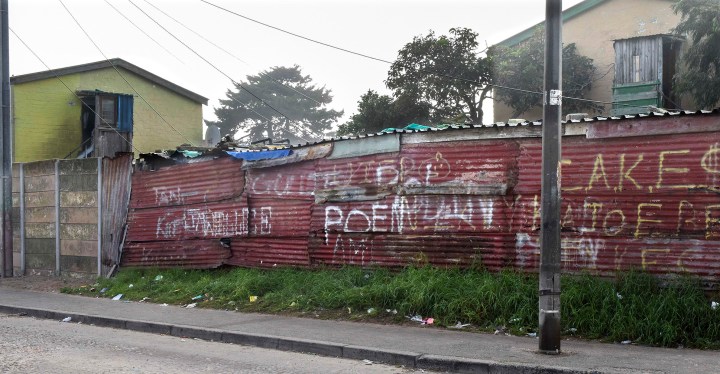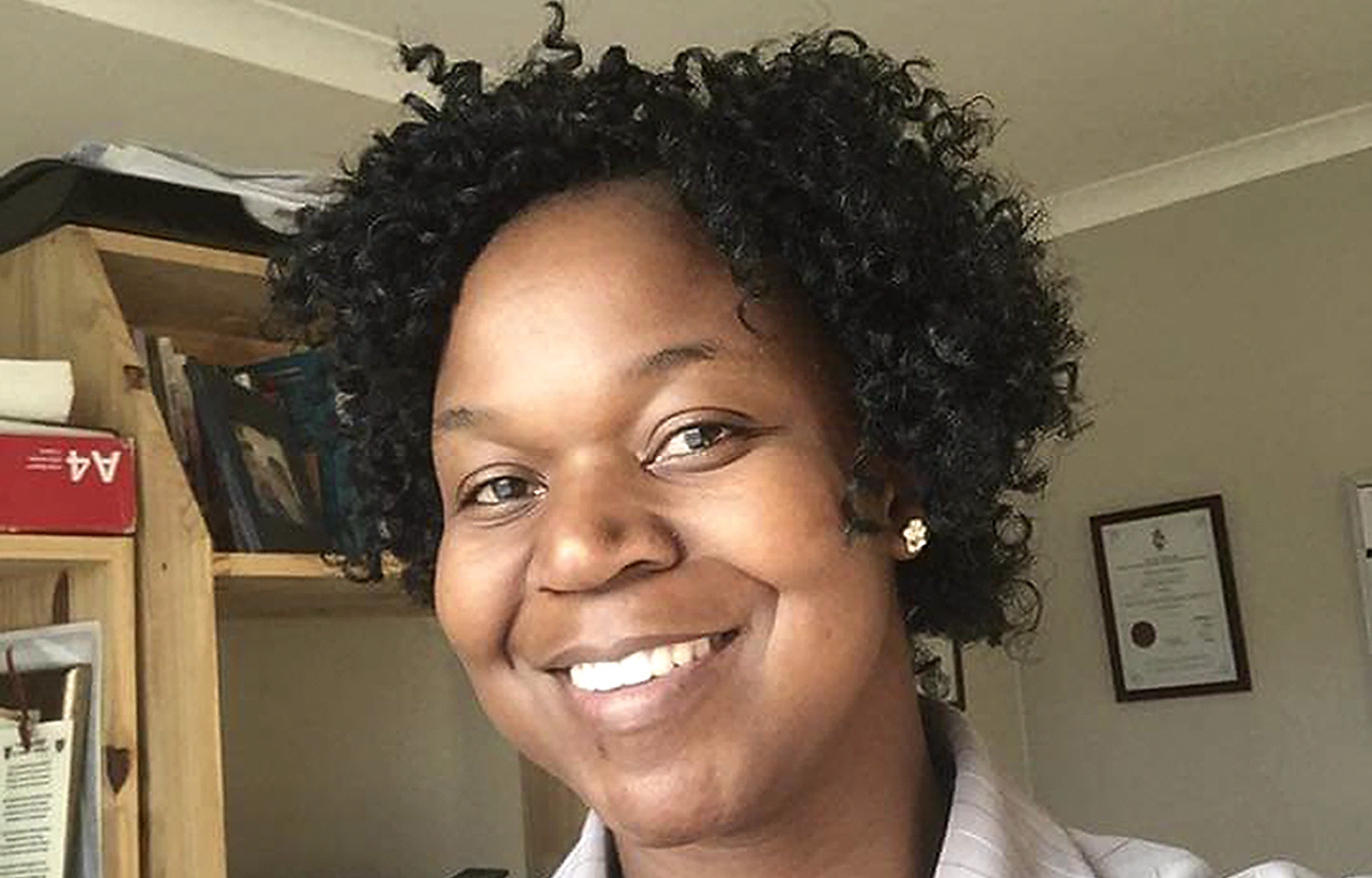MAVERICK CITIZEN GANGS
Gangs of the Cape Flats: An alternative form of governance in desperate times

Criminologist Irvin Kinnes, in his thesis titled ‘Contested Governance: Police and Gang Interaction’ reveals that gangs in crime-ridden areas on the Cape Flats have their own welfare institutions, churches and sports clubs that provide gangs with ‘space’ in communities. The downside is that gangs slowly begin to rule violently across these communities, often with complete impunity.
For 10 minutes as bullets flew overhead, Apostle Lorraine Moko lay on the ground between cars listening to her colleague pastor Dorothy Soetwater pray for the “Blood of Jesus” to stop the shooting.
They had been chatting in a vehicle after Moko had just delivered fresh spinach to Soetwater’s Lavender Hill home.
Moko, from the Throne of Grace Centre in Vrygrond, noticed a young boy running with a gun in his hand and warned her colleague. Soetwater, who is used to gun battles in the area, told her to relax. But the situation changed in an instant.
“I could feel in my gut that something bad was about to happen. I just heard gunfire erupting with several shots being fired. Soetwater was on the floor praying” recalled Moko.
“There was no way out. I don’t know how many bullets hit my car and the one parked next to mine. I got out and lay on the ground between the two cars.”
The shooting lasted for about 10 minutes, she said.
“When everything went silent, residents came out thinking we both were killed,” she recalled. There was a sigh of relief when both women rose and shouted to all that they were okay.
Usually, when Moko visited Soetwater, her car was the only one parked in front of the flats. But not on that day. Moko believes the second car had been parked there at that moment for a reason. When the shooting subsided, more than 14 bullets pockmarked the vehicle’s body. Had it not been there, Moko and Soetwater would have been killed — or seriously injured.

Apostle Lorraine Moko knows that anything can happen any time she visits her friend in Lavender Hill. (Photo: Supplied)
Their story is not unusual. As pastors who work in a gang-ridden area, both know that they often compete for attention with gun-toting youngsters who rule the townships of the Cape Flats. Their experiences dovetail with findings of a doctoral thesis prepared for the University of Cape Town and that has confirmed that gangs in these areas have become social movements and even governments.
Criminologist Irvin Kinnes, in his thesis titled Contested Governance: Police and Gang Interaction reveals that gangs in crime-ridden areas on the Cape Flats have their own welfare institutions, churches and sports clubs that provide gangs with “space” in communities.
The downside is that gangs slowly begin to rule violently over these communities, often with complete impunity.
Like churches, gangsters often assume the role of the Good Samaritan. As Kinnes points out: “Gangs are far more adept at organising and claiming space. Gangs have established their own institutions such as churches, football clubs and welfare organisations.”
From Kinnes’ research, it appears as if communities place greater reliance on some gangs which display “characteristics of social organisations” and those able to defend communities against other gangs.
“All these institutions give them the necessary legitimacy in the eyes of certain sections of the community. The actions of paying rent, supporting immediate residents financially to bury loved ones and providing transport all provide the gangs with governance leverage,” said Kinnes.
People knew who they could turn to in times of need and Kinnes found that “a significant portion of the governance of organised gangs was the practice of ‘buying’ sections of the community”.
Residents could certainly not approach the SA Police Service (SAPS) for financial or social support and Kinnes’ research shows that the gangs of the Cape Flats have set themselves up as “an alternative governing node”. This dual face of the gangs — tormentors on the one hand, philanthropists on the other — was evidenced with the recent arrest of underworld kingpin Nafiz Modack on 28 April.
Modack was bust on charges of extortion, conspiracy to commit murder, the actual murder of Anti-Gang Unit (AGU) Lieutenant-Colonel Charl Kinnear in September 2020 as well as the failed hit on criminal lawyer William Booth on 9 April 2020.
At Modack’s appearances in the Blue Downs Regional Court, supporters regularly congregate outside. In their eyes, Modack is innocent, a man with a heart of gold. In his affidavit handed to the Blue Downs Regional Court during his bail application, Modack himself underlined this role:
“I’m involved in charitable work. I support soup kitchens which provide hot meals daily to indigent persons in the Cape Peninsula, including many children.”
This reliance by impoverished communities on drug merchants and gang kingpins has led to the formation of a unique bond. They are not just the ears and eyes for the hands that feed them, but communities at times would go as far as preventing police from arresting a known gang leader.
Author and expert Don Pinnock, in his 1984 study on gangs, charted the history of their development after the forced removals of District Six.
Gangs have a long history in South Africa. The first were formed in the early 1900s. A defining feature of the gangs in District Six, according to Pinnock, was that these were well integrated into the community. Gangs also acted as an informal form of social control, working in tandem with businesses in the area.
That was then. Today it is nearly impossible to escape the tyranny in gang-ravaged areas of the Cape Flats.
Violence torments residents daily. Shooting incidents and bullet-riddled bodies are the norm in most of the gang-ravaged areas. There were an estimated 100,000 gang members in 29 communities across the Cape Flats when Kinnes’ research was conducted. This number continues to rise with new gangs being formed across the Cape Flats.
Some of the prominent gangs are the Americans, Hard Livings, Terrible Josters, Fancy Boys, Junior Mafia, 28s, Horrible, Terribles and the Mongrels.
In Atlantis, about seven Americans members candidly spoke to Maverick Citizen about the attraction of the gangs.
I tremble whenever I go into Lavender Hill. It is a feeling that I cannot shrug off. This incident has made me ask myself to what extent the brains of children in Lavender Hill and other gang-infested areas on the Cape Flats have shrunk.
Twenty-four-year-old *Fernando, 18-year-old *Cassie, 27-year-old *Nolan and a 16-year-old pupil spoke to Maverick Citizen in their backyard at Dura Flats while several other armed members were at their posts guarding the entrances.
“Being part of the gang provides me with security so that I can walk freely in the area. At night when we go to our homes, we make sure that everyone is safe. Those armed are the ones that go home last.
“The money I make is the main reason why I don’t want to leave the gang. Where will I get the money that I’m earning from selling drugs? I have people in different areas selling drugs for me. All the money I collect goes to the main man and I’m satisfied with my earnings,” Fernando added.
The drug money, which amounts to thousands, he said, was used to arrange bail for gang members, provide food to poor members and most importantly to buy guns.
Cassie’s road to gangsterism began as a result of continued bullying at school. He was assaulted by fellow learners and other gang members on the way to school.
“Since the day I got the American gang tattoo, the bullying stopped. Eventually, I dropped out of school. Inside the Americans camp I feel safe and if someone hurts or shoots me then I know my brothers will protect me.
“Not even the police, your parents or family members can provide you with that safety.”
All these gang members are aware that during every shoot-out with rival gangs there is a possibility that one of them might be fatally wounded. But they have made peace with that and say that is part of the package that comes with joining a gang.
A 16-year-old high school pupil who was recently shot in the stomach is also a member of the Americans gang. Similar to the experience of Cassie, the pupil also had to endure constant bullying at school.
The pupil said: “Parents don’t understand the effect bullying has on a person. You feel hopeless and no one can help you. Here I have the Americans gang members looking out for me.
“Everyone in the school knows that I’m a gang member. The bullying has stopped and I continue attending school.”
For years the former Gang Unit, now called the AGU, has been trying to crack down on gangsterism. But it appears to be a futile experiment while gangs and the lucrative gun trade on the Cape Flats continue to flourish.
Why?
An answer is found in Kinnes’ analysis, looking at other socio-economic and political conditions at play and which the SAPS, as an institution, cannot solve.
Hence a “whole-of-society approach” is needed as well as policing approaches that draw “flexible linking of nodes together”.
Scholars also agree that the AGU does not appear to be an effective response to policing gangs as it was developed by political police leadership to manage the crime problem.
In 2018, the AGU was launched with great fanfare by Police Minister Bheki Cele and President Cyril Ramaphosa. Many believe the true reason for police managers launching the AGU was to appease residents with “something being done” about the gang problem.
The launch was preceded by a flurry of calls by Cape Town Mayor Dan Plato for the reintroduction of this unit to combat rampant crime in the Western Cape.
After 1994, the call for a reorganised gang unit was made by members of the ANC especially in dealing with gangs in the Western Cape.
The unit was restructured and placed under the command of the organised crime unit, but it was disbanded in 2003. When the DA won control of the Western Cape in 2009, there were again calls for the return of a specialised gang unit.
Kinnes’ study further points out that the formation of AGU was one way of assuring the general population that something was being done by the politicians and operational leadership of the police to address the problem, especially during elections.
Kinnes says there is no easy fix for police in dealing with gangs. Instead, he says, establishing governance over the gangs will require the police to respond to the gangs from a “social control” perspective using various measures. Kinnes’ research indicates there is no immediate fix for gang violence.
Moko knows that anything can happen any time she visits her friend in Lavender Hill.
“I tremble whenever I go into Lavender Hill. It is a feeling that I cannot shrug off. This incident has made me ask myself to what extent the brains of children in Lavender Hill and other gang-infested areas on the Cape Flats have shrunk,” she said.
To say nothing of the lives of those confined to spaces dangerous to life and limb and the freedoms this situation impinges upon. DM/MC
*Names have been changed















Comments - Please login in order to comment.